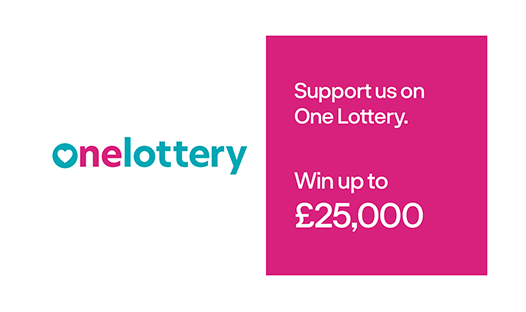Glossary
Glossary of Medical Terminology used in Cluster Headache
- Abortive treatments
Drugs used to help stop individual attacks are called abortive agents or acute treatments
- Anaesthesia dolorosa
A combination of pain and numbness.
- Analgesics
Medications that relieve pain.
- Anticonvulsant
A medication that prevents convulsions or seizures.
- Asymptomatic
No symptoms or complaints.
- Autonomic
Automatic, not under conscious control.
b- Bilateral
Referring to both sides. Bilateral means pain on both sides of the face.
c- Case control study
A study of a particular disease or factor in which there is a control group of individuals who do not have the disease or factor being
studied.- CCH - Chronic Cluster Headache
Chronic cluster headache, no pain-free remission occurs within one year, or the remission periods last less than four weeks.
- Cephalalgia
Headache
- Cerebellum
Part of the brain that controls movements.
- Cerebral cortex
Part of the brain that analyzes nerve signals and sends out responses.
- Cerebrospinal fluid
Cerebro spinal fluid. This serum like fluid circulates through parts of the brain, the cavity of the spinal cord, and the subarachnoid
space, functioning as shock absorption.- Cervix
The top vertebrae of the spine where the trigeminal nerve originates and through which the spinal cord passes to connect to the
brain stem.- Circadian
Occurs regularly every 24 hours
- Circannual
Occurs regularly every year.
- Cluster Attack
An individual episode of pain that can last from a few minutes to some hours
- Cluster bout
Refers to the time period where a number of attacks recur, usually lasting some weeks or months.
- Cluster tic syndrome
Clinical pain pattern in which symptoms of cluster headache and tic douloureux co-exist.
- Cohort
A group of individuals with a particular disease or factor who are being followed up for a longer period of time. it is prospective if
planned in advance and retrospective if the data was collected before the study was planned.- Computer tomography
Sophisticated X-ray imaging technology that which produces pictures of layers of the body at any depth.
- Concomitant
Using more than one simultaneously.
- Conjuctival injection
Red eye, autonomic feature.
- Contraindicated
Not advised, associated with taking more than one type of drug.
- Control
A standard against which experimental observations may be evaluated. Matched control means that the experimental group only
differs from the control group by the one factor that is being studied, e.g. all groups are the same in age, gender.- Controlled prospective studies or cohort studies
Studies that have been planned in advance and follow patients for a longer period of time.
- Corticosteroids
Effective and fast acting short term preventative for CH.
- Cranial autonomic symptoms (CAS) or features.
These are called 'autonomic' because they are involuntary or automatic
responses not caused by any conscious effort or external forces.- Cranial nerves
Twelve pairs of nerves that serve various areas and functions of the head. The trigeminal nerve is one of these nerves, called the
fifth.- CSF
See Cerebrospinal fluid
- CT scan
An internal picture of the body constructed by a computer by piecing together a series of X-ray images. Sometimes used in
detecting tumors (CT stands for computed tomography).d- Deep brain stimulation (DBS)
An experimental procedure in which surgeons insert a thin electrode through a small opening in the skull into the thalamus, a part
of the brain where pain sensation occurs. A stimulation device attached to the electrode delivers low-grade electrical signals in an
attempt to override pain signals.- DHE
Dihydro-ergotamine.
- Dyaesthesia
A numbness or abnormal sensation severe enough that a patient considers it disturbing. An unpleasant sensation, whether
spontaneous or evoked.e- ECH - Episodic Cluster Headache
Episodic cluster headache, sufferers may have one or two cluster bouts per year, each lasting between 1-3 months.
- Epidemiology
The study of disease as it occurs in groups of people or even other populations.
- Etiology
Cause
- Eyelid oedema
Swelling of the eyelid, autonomic feature.
f- Facial palsy
Weakness of the muscles of facial expression.
g- Gamma Knife
A non-incision surgical device that uses Gamma radiation to cause precisely aimed damage to targeted tissue. Used to create
lesions on the root of the trigeminal nerve.- Ganglion
A cluster of nerve cells.
- Gasserian ganglion
The cluster of nerve cells where the trigeminal nerve branches out into its three divisions and exits the skull. Sometimes just called
trigeminal ganglion or semilunar ganglion.- GONB (Greater Occipital Nerve Block)
An injection of a combination of anaesthetic and steroids can be effective in aborting bouts amongst some sufferers with limited
side effects.h- Hemicrania Continua (HC)
Is a strictly one-sided headache that is continuous but generally waxes and wanes in intensity. It is generally defined as mild to
moderate in severity, but with more severe exacerbations there may be accompanying same-sided cranial autonomic symptoms as
seen in CH and other TACs. These exacerbations can last from 20 minutes up to several days.- Horner's Syndrome (partial)
Sinking in of the eyeball, drooping of the eyelid, pupil constriction.
- Hypaesthesia
Medical term for numbness.
- Hypnic headache
Involves attacks of a dull headache that always awakens sufferers from sleep. Unlike cluster headache (CH) there are normally no
associated autonomic symptoms.- Hypothalamus
Is an area of the brain that produces hormones that control body temperature, hunger, moods, release of hormones from many
glands, especially the pituitary gland, sleep, thirst etc.i- Ice-pick headache
see Primary stabbing headache.
- Idiopathic
Refers to a disease or condition of unknown cause or origin.
- Idiopathic stabbing headache
see Primary stabbing headache.
- Interictal
In between attacks.
- Intracranial
Inside the dome that houses the brain.
- Intradermal
Into the skin.
- Intranasal
Through the nose.
- Ipsilateral
On the same side.
l- Lacrimation
Pertaining to tears. Autonomic feature.
- Lithium
Is effective as a preventative amongst many sufferers, more so amongst CCH.
- Lumbar puncture
Insertion of a needle into the back to tap out CSF for testing.
m- Magnetic resonance imaging (MRI)
A device that creates computerized images of the body's interior. Instead of using radiation as in an X-ray, MRI involves a rapid
series of pictures taken while the subject is inside a magnetized chamber. An MRI brain scan is painless and is useful in detecting
multiple sclerosis and brain tumors.- Magnetic resonance tomographic angiography (MRTA)
A type of imaging similar to MRI that can pick up even very small blood vessels. Gadolinium dye is injected into the patient's
bloodstream to enhance the image.- Mandibular
Area referring to the lower jaw region of the face.
- Maxillary
Area referring to the upper jaw and cheek region of the face.
- Methysergide
Methysergide can be a very effective preventative treatment for CH.
- Migraine
As with CH, migraine can be either episodic or chronic and there are two main types: attacks with and attacks without aura, the
former being much less prevalent. When present, the aura relates to accompanying symptoms such as visual, sensory and other
disturbances.- Miosis.
Constriction of the pupil (becoming smaller). Autonomic feature.
- Morbidity
A disease/ or side effect.
- Myelin
Myelin is an electrically-insulating layer.
- Myofascial pain
Dull, aching muscle pain of uncertain cause. When it occurs in the facial muscles, it's sometimes confused with TN because the
pain can be triggered by touching the area.n- Nasolabial
Area down the side of the nose and the lips.
- Nerve block
Use of a drug, chemical or surgery to stop a nerve signal from getting through to the brain. In the case of CH, these can be used
for temporary pain relief or as a way to diagnose the exact nature and location of a pain.- Nerve fiber
A strand of tissue made up of nerve cells that carry nerve impulses (biochemical signals to and from the brain).
- Neurectomy
Surgical removal of a nerve or nerve branch.
- Neurons
Cells that send and receive electrical signals to and from parts of the body. These are the nerve cells that are stimulated to send
impulses (messages) to and from the brain.- Neuropathic pain
Pain that originates in the nerve, usually due to injury or disease.
- Neuropathy
Disturbance of function or pathological change in a sensory nerve causing numbness.
- Neurovascular
Nerve and blood vessel.
- Nociceptor
A type of nerve receptor that activate when there's a painful stimulus.
- NSAIDs
Non-steroidal anti-inflammatory drugs. Drugs such as aspirin, ibuprofen, indomethacin etc.
o- Occipital Nerve Stimulator Implant
Implanted device which stimulates the occipital nerves to reduce severity and incidence of CH attacks.
- Oedema
Swelling
- ONSI
see Occipital Nerve Stimulator Implant.
- Ophthalmic
Area referring to the region of the face around the eyes.
- Opiates
Pain-killing agents that originate from the poppy flower and its product opium (Morphine and codeine were two of the earliest
opiates)- Orofacial
Area of the face around the mouth.
- Oxygen therapy
Breathing in pure (100%) oxygen at a rate of between 7 to 15 litres per minute is relatively fast acting in providing pain relief
amongst most sufferers.p- Paresthesia
An unusual sensation that may be described as tingling, crawling or pins and needles. Often accompanies mild numbness. An
abnormal sensation, whether spontaneous or evoked.- Peripheral nerves
Nerves outside the brain and spinal cord.
- PET scan
Positron Emission Tomography
- PH (Paroxysmal hemicrania)
Involves one-sided attacks that have closely similar characteristics of pain and associated
(autonomic) symptoms of cluster headache.- Pons
Part of the brain stem to which the trigeminal nerve is connected; posterior part lying between medulla and midbrain.
- Post-herpetic neuralgia
A type of facial pain caused by damage from the herpes zoster (chickenpox) virus. Can occur after a bout of shingles.
- Posterior- anterior X-ray of the skull
A standard view of the skull.
- Premonitory
The feeling that something (bad) is going to happen, e.g. a headache.
- Prevalence
The total number of cases of a disease at a certain time in a particular place.
- Primary stabbing headache
(also previously known as idiopathic stabbing headache, ice-pick headache, jabs and jolts, ophthalmodynia periodica) manifests itself in very brief, sharp or jabbing pain in the head (not usually the face), either as a single stab or a series of brief repeated volleys of pain.
- Prognosis
Forecast as to the probable outcome of a disease.
- Prophylactic
Drugs used to help prevent CH occurring in the first place are called prophylactics or preventative treatments.
- Ptosis
Droopy eyelid. Autonomic feature.
r- Randomized controlled trial (RCT)
Refers to a study that aims to reduce bias towards the new treatment being used by keeping both doctors and patients blinded as
to which is the new treatment.- Refractory
Does not respond.
- Remission
Is the pain-free period between two cluster bouts.
- Rhinorrhea
Runny nose. Autonomic feature.
- Rhizotomy
A surgical procedure to cut or damage a nerve root so as to interfere with the transmission of pain signals to the brain.
s- Steroids
Drugs used to reduce swelling and inflammation, e.g. Prednisone.
- Subcutaneous Sumatriptan (Imigran)
Self Injectible form of triptan – first line abortive for cluster headache.
- Subcutaneous.
Beneath the skin, usually an injector pen.
- SUNCT
Short lasting unilateral neuralgiform headache attacks with conjuntival injection and tearing, also manifests itself as a one-sided
headache and is associated with the autonomic symptoms as described in cluster headache.- Synapse
Gaps between nerve fibers that nerve impulses must jump to continue on.
t- Temporal arteritis
Aching, throbbing and sometimes burning pain in the temple area caused by an inflamed artery in that area.
- Thalamus
The part of the brain that relays messages between various parts of the body and the appropriate other part of the brain. It
functions as the brain's central switching station.- Tic douloureux
Another name for trigeminal neuralgia. (means "painful spasm" in French).
- Topical agent
Liquid, spray or cream normally associated with 'applying'.
- Trigeminal Autonomic Cephalgia (TAC’s)
Refers to a group of facial pains that are all associated with over activity of the trigeminal nerve. Includes conditions such as cluster
headaches.- Trigeminal Nerve
The trigeminal nerve (the fifth cranial nerve, also called the fifth nerve or simply V) is responsible for sensation in the face. Sensory
information from the face and body is processed by parallel pathways in the central nervous system.- Trigeminal neuralgia (TN)
Manifests itself as very short episodes of intense, electric-shock like pain in the eyes, nose, scalp, forehead, jaws, and even the
lips. It is not classified as a primary headache- Trigeminal neuritis
An inflammation of the trigeminal nerve and/or its branches.
- Trigger point
The site, often at the end of a nerve, which, if touched, results in pain.
u- Unilateral
On one side. Normally face, neck or head in CH.
v- Vascular
Relating to blood vessels.
- Verapamil
Is currently the most preferred preventative drug amongst sufferers of both ECH and CCH.






